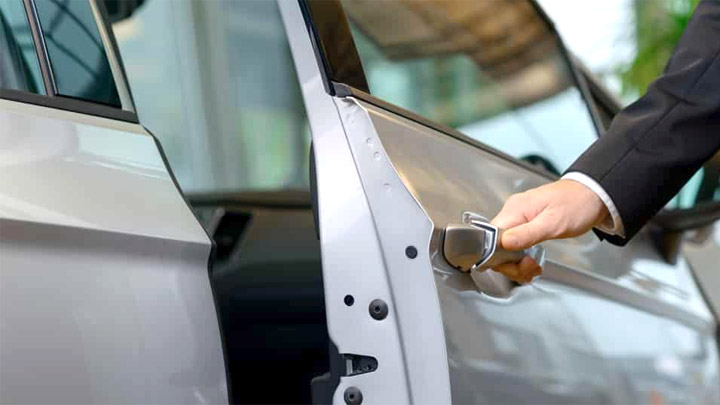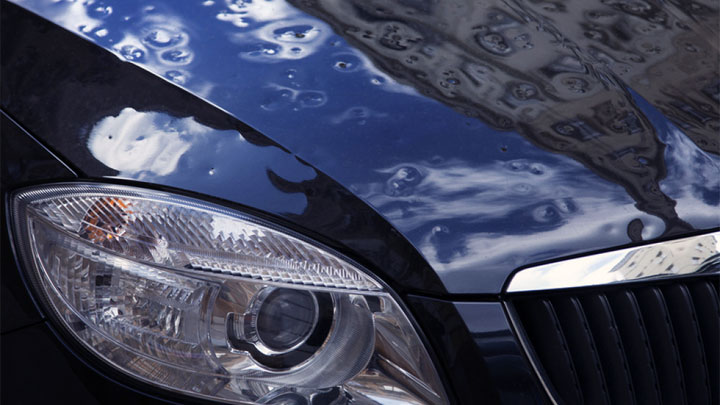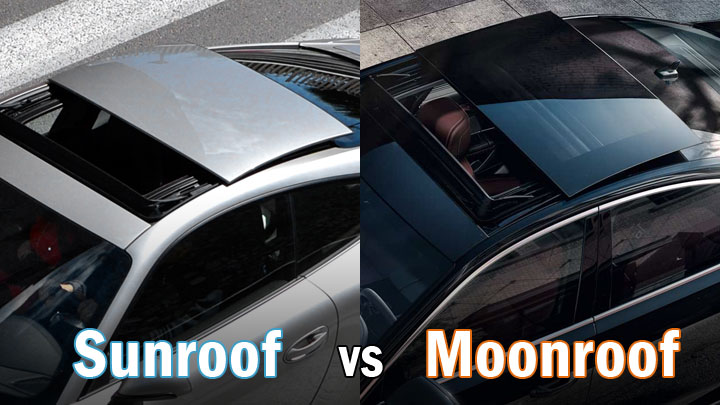Last Updated on June 15, 2022
It is not uncommon for the door of a modern automobile to refuse to latch closed. In this article we will discuss how this can happen and ways to resolve the problem.
In addition to latching problems, we will also cover several other reasons why a car door might be reluctant to shut.
See Also: 13 Different Styles of Car Doors
How a Car Door Latch Mechanism Works
Door latch designs have been developed over decades. Modern latch mechanisms function to keep the door secure to the adjacent jamb while driving and during an accident yet enable the door to be opened should a collision occur.
This is accomplished by the use of either a jaw type latch or a rotating tooth latch.

When the car door closes either of these latch types will firmly grip a headed striker pin or u-shaped striker bar on the door jamb. Whether your car has a jaw or rotating tooth type latch, for our discussion here we will simply use the term, jaw.
When you open the car door by pulling on the door lever or handle, the latch mechanism releases the jaw and the door opens. The jaw is then held in the unlatched position by the latch mechanism. When the door closes the jaw hits the striker and is pushed back into the latched position.
Related: 4 Reasons Your Car Window Won’t Go Up
You may have your seat belt secure and feel safe, but you could lose hold of that door. And should it fly open, it could strike a passing car and cause a serious wreck.
Reasons a Car Door Won’t Close All the Way
So your car door closes but won’t latch and can be pushed open. Or the door when closed just bounces open.
#1 – Latch Jaw Stuck in Closed Position
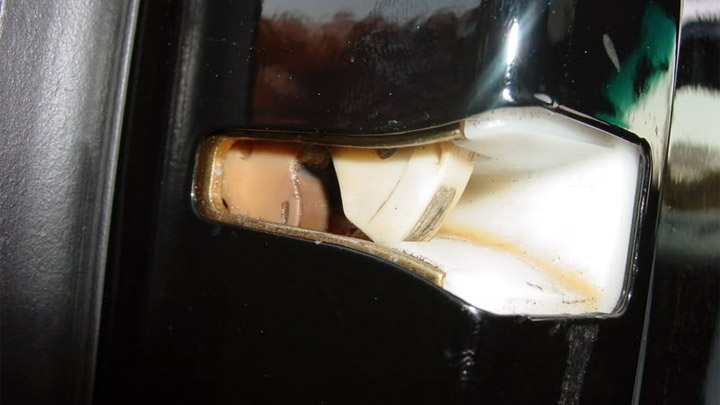
Examine the latch of the door that won’t close. Now examine another door that opens and closes properly. On this door you will see what a fully open jaw looks like.
If the offending door’s latch is not in the fully open position, the door will not latch closed.
How to Fix
- While observing the jaw, use one hand to pull the door lever or handle as if to open the door. This should release the jaw, and it should spring to the fully open position. Release the door handle. The jaw should remain open.
- Using a screwdriver, attempt to push the jaw to the closed position. It should easily move to the closed position and ‘click’ into place. Now pull the door lever or handle again. The jaw should once more snap to the open position.
- Test operate the door. If it latches closed and reopens properly for three or four trials, you have resolved your problem.
- If these steps fail to resolve the problem, your car door’s latch mechanism may be defective. Corrective action by a qualified technician will be required.
See Also: How to Fix a Seat Belt That Won’t Retract
#2 – Jaw Won’t Stay in Latched Position
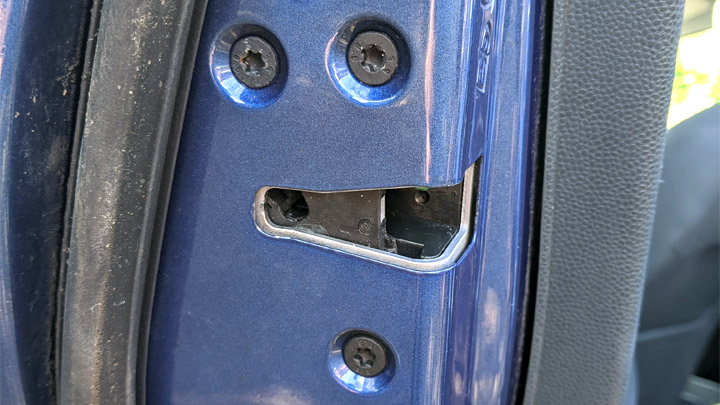
Examine the latch of the offending door. If the jaw is in any position other than fully open, there may be a latch mechanism problem.
How to Fix
- Using a screwdriver move the jaw to the fully open position. Then move it to the closed position. It should ‘click’ into place at the closed position. Attempt to move it with the screwdriver. It should be firmly held in this position.
- While observing the jaw, pull the door lever or handle as if to open the door. This should release the jaw, and it should snap to the open position. If it does not, the latch mechanism may have failed. It is also possible that the latch mechanism at the jaw is dry and binding due to lack of lubrication. Follow Steps (3) and (4) to free up and lubricate the jaw.
- You may need some help for this step. Have your assistant hold the door opening lever or handle out as if to open the door. Using a penetrating lubricant such as WD-40 lightly spray the pivot location(s) for the jaw. Do not over spray. Work the jaw back and forth with the screwdriver until it moves freely. Release the door opening lever. Push the jaw to the closed position. Wipe away any oversprayed lubricant.
- With the jaw in the closed position, pull the door opening lever. The jaw should snap to the open position. If it does not move or only partially moves toward the open position, the latch mechanism may be defective. Corrective action by a qualified technician will be required.
Read Also: 4 Reasons What is Getting Into Your Car
#3 – Latch Jaw and Striker Misaligned

A sagging door may be the result of a prior mild collision which in turn causes the latch jaw to not align with the striker on the jam. Alternatively, the hinge fasteners may have loosened allowing the door to move out of proper alignment.
How to Fix
Corrective action will necessitate realignment of the door. This may be a difficult process for a DIY home mechanic. In most cases the car will need to be taken to a quality auto body shop for corrective action.
#4 – Frozen Latch Mechanism
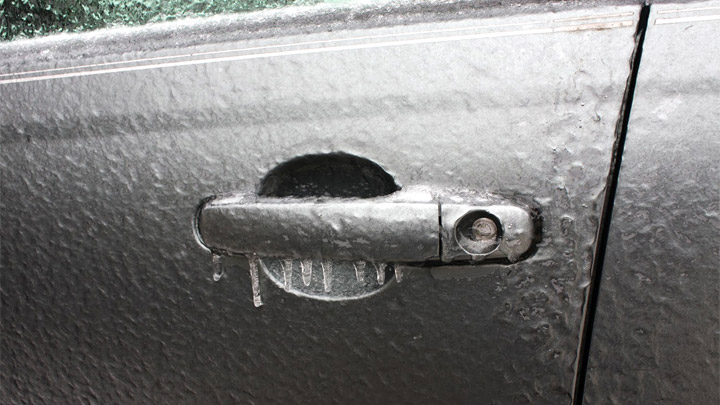
In a modern car a frozen door latch is a rare occurrence. But it can happen.
Such an event may occur in this fashion:
Your car has been parked for a while outdoors during a storm. Rainfall accompanied by plummeting temperatures has frozen up your windshield and windows. You open the door to grab your scraper and the door will not close. The latch mechanism has frozen such that the jaw will either not fully open or latch upon closing the door.
How to Fix
Three possible solutions here:
- First, do not slam the door. This could damage the latch jaw. Instead with the door slightly open, pull the door opening lever or handle out and let it snap back several times. Often the impact of this action will break loose a frozen latch mechanism. If this doesn’t work then…
- Get in and start the car. Close the door as much as possible. Warm the engine and turn on the front windshield defroster to ‘high’. Set the heater temperature to its highest setting. This will warm the interior of the car including the door assembly. Fifteen to twenty minutes may be needed to thaw the door latch mechanism. If this fails to resolve the problem there is one other option…
- You will need warm water (at home, for example). Start the engine and defroster as described in Step (2) above. While the car warms up, fill a tea kettle with hot tap water (not boiling). When the inside of the car and window glass are fully warm, hold the door snugly closed. Now, pour the warm water slowly over the rear corner of the door above the outside latch handle.
- Following each of the procedures above, close the door to see if you have resolved the problem. If the door still won’t latch closed, you will have to contact a service technician for corrective action.
See Also: Best Car Covers for Snow, Ice, and Hail
#5 – Jaw Area Corroded
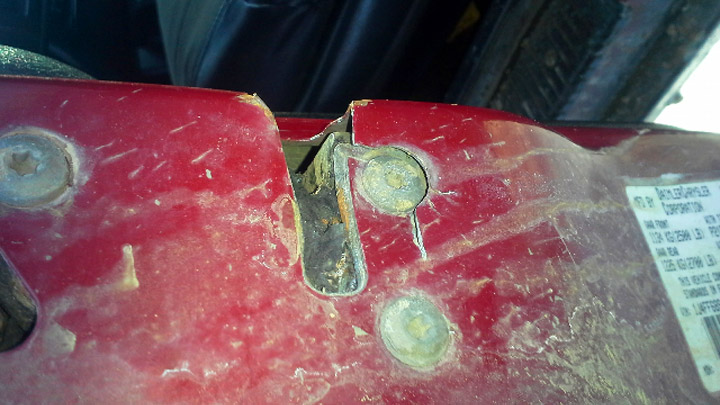
With older vehicles (especially those stored outside for long periods of time), enough corrosion of the jaw area may prevent a car door from closing and latching.
How to Fix
The latch that is stuck due to severe corrosion may possibly be corrected by following steps (3) and (4) in the “Jaw Won’t Stay in Latched Position” section above which deal with lubricating the jaw.
#6 – Latch Mechanism Failure
A latch operational mechanism failure is very possible if none of the steps discussed above correct the problem.
How to Fix
Should this be the case, repair or replacement of the latch mechanism by a qualified automotive technician will be required.
See Also: 5 Signs of Structural Damage in a Car

